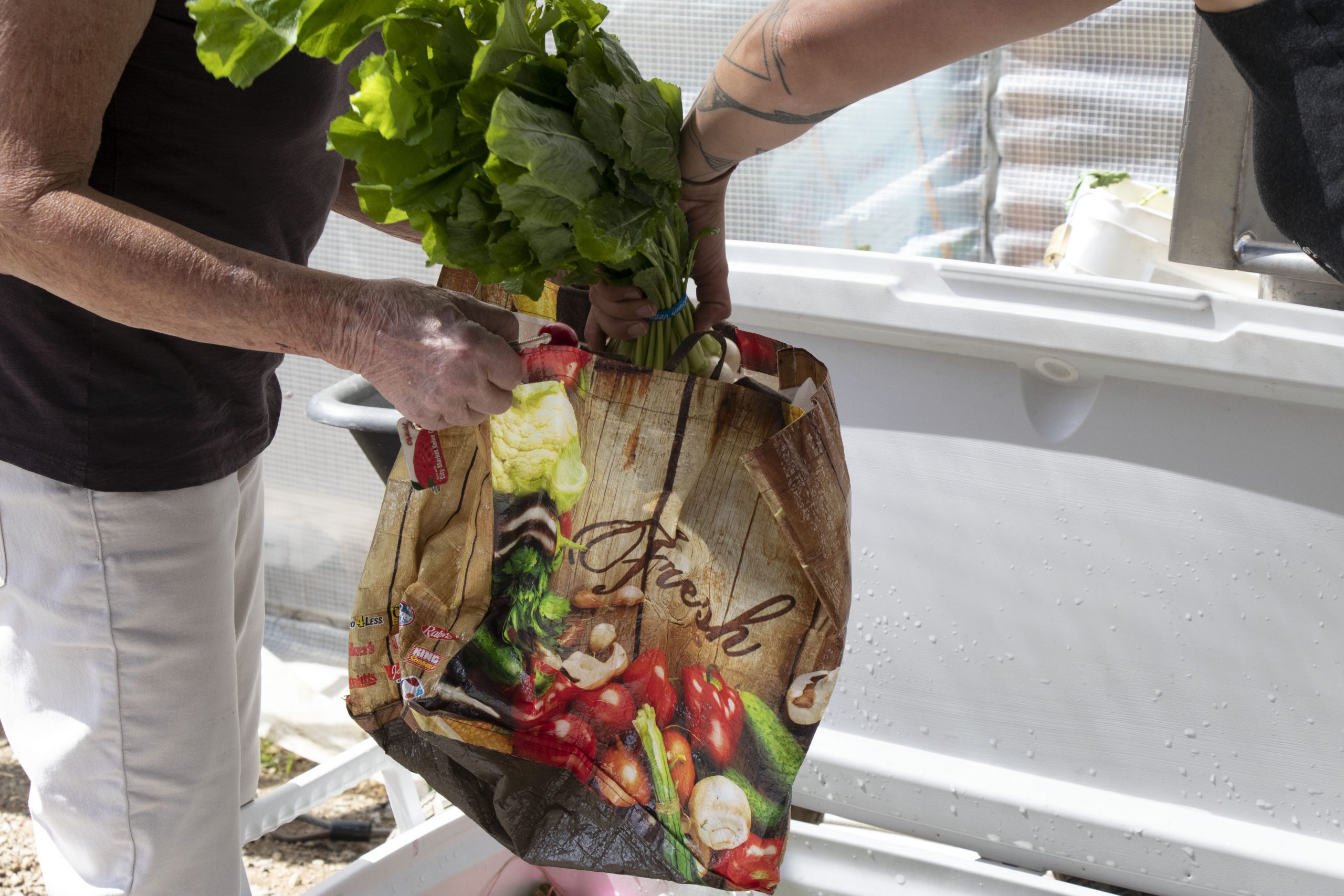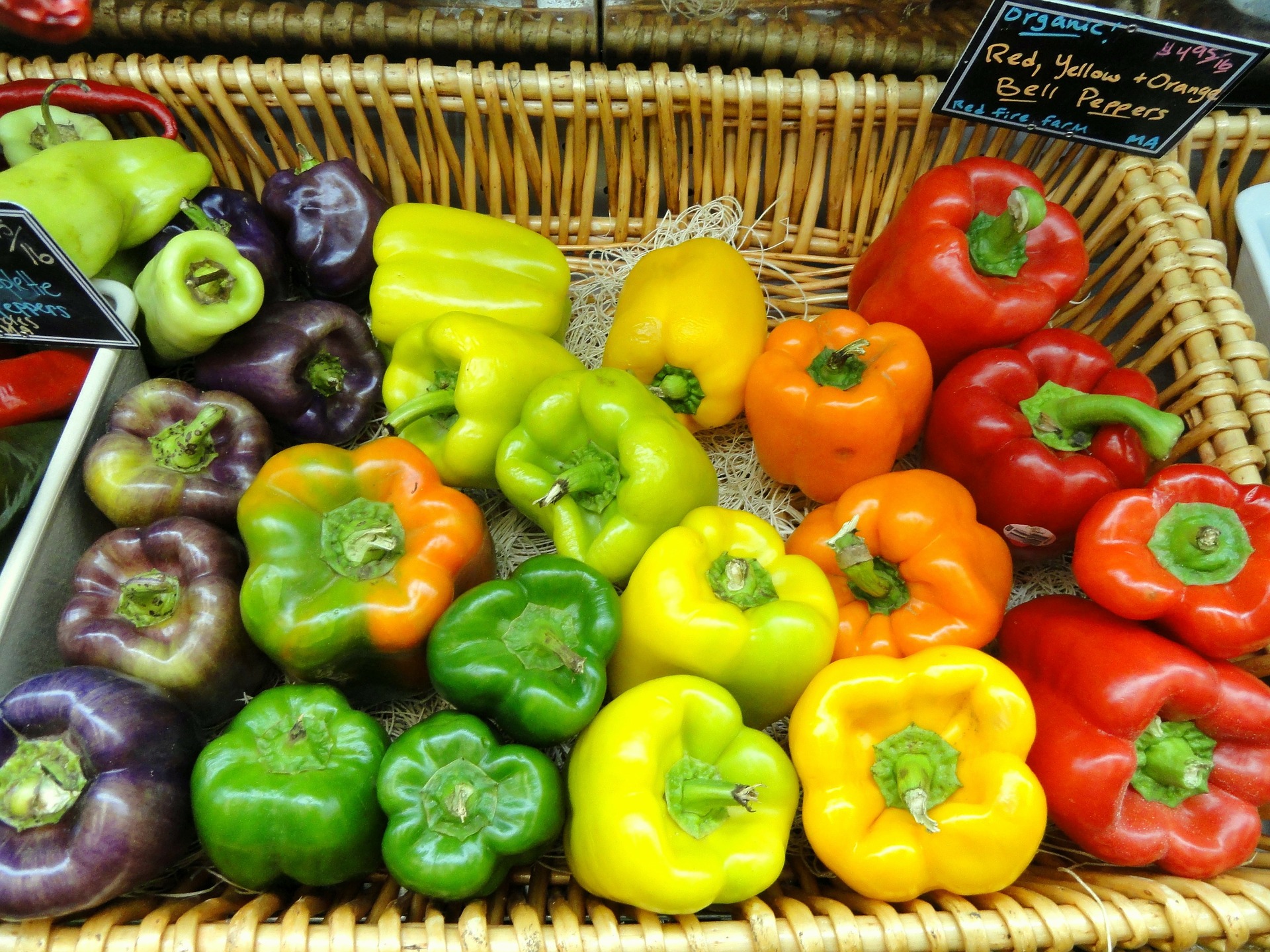
Dear Eartha, I loved all the fresh Colorado veggies offered this summer at the Dillon Farmer’s Market. Now that the market is wrapped up for 2021, how can I continue to find earth-friendly food while shopping for groceries?
If you’re like me, you care about where your food comes from, and that means you probably take the extra step to ensure you’re purchasing locally-grown produce, and that’s important! Food production can have huge, and hugely variable impacts on the environment.
The distance food travels to get to your plate, the resources required for growing, the type of farming methods used, and many other factors affect the environmental impact of the foods we eat. That impact adds up. In 2019, agricultural activities – crop and livestock production for food – made up 10% of greenhouse gas emissions in the U.S. Let’s dive into some of the ways we can be sustainably sound when planning for the next meal.
Buy Seasonally

Consider an apple at the Dillon Farmer’s Market in September. It was probably picked fresh and traveled about 178 miles from the Western Slope. Now, consider an apple in the middle of January. That apple could be coming from as far as Washington (around 1,250 miles), where the producers are using resources to store and then transport apples in a refrigerated truck. That’s a pretty big difference in mileage and emissions spent during that travel time.
Growing and transporting produce so that it is available year-round uses a lot of energy, which in turn contributes to more pollution. Buying produce when it is seasonally available supports our state economy and helps us save money because of lower prices. Not to mention, in-season produce tastes better too!
Buy Locally (When Possible)
In the United States, most produce is said to travel 1,500 miles from farm to plate. Why should we care? The more food that must travel to get to your table, the more fossil fuels are burned. Where you put your money matters and can reduce your greenhouse gas emissions by going for the more local options. You can make a difference by swapping out your brewery variety pack from Delaware with a Breckenridge Brewery 15’er variety pack.
If you aren’t familiar with the Colorado Proud program, check it out! Colorado Proud is designed to help consumers identify and purchase Colorado products. The logo helps residents and visitors easily identify these products. We know we can’t always buy local, but we’re making a difference when we can!
Buy Less-Processed
Let’s go back to that apple from the Farmer’s Market. Growing and transporting it requires land, water, and fossil fuels. Now, consider prepackaged single-serve applesauce pouches. Not only do the apples need to be grown and picked, but they also need to be processed into applesauce which uses energy. It then needs to be divvied up into those little packages using, you guessed it, energy. Those little single-serve packages are made of plastic, which is made from oil and takes both energy and water to produce. Also to consider is that you lose some nutritional value in overly-processed foods.

As you can see, all these little things can add up. And just by making simple changes to our grocery list, we can help reduce pollution and conserve natural resources. Start getting familiar with produce seasonality and what’s in season when you’re shopping. Moving into fall, this would include produce like apples, beets, peppers, and hearty greens.
When it comes to packaged food, look on the package to see where it’s manufactured and distributed. While your favorite bag of potato chips from Pennsylvania might be tasty, it takes a lot fewer resources to get a bag of Colorado-made potato chips into the hands of a consumer.
There are lots of different resources required to get our food from farm to table that can also create pollution. If we consider the big picture, the less-processed foods are going to have a smaller impact on the environment.
When you can, buy produce when it’s in season. Get the local option over non-local. Lean towards the less-processed stuff. Once you begin applying some of these shopping practices to your weekly routine, reducing your environmental impact will start to feel like second nature.
